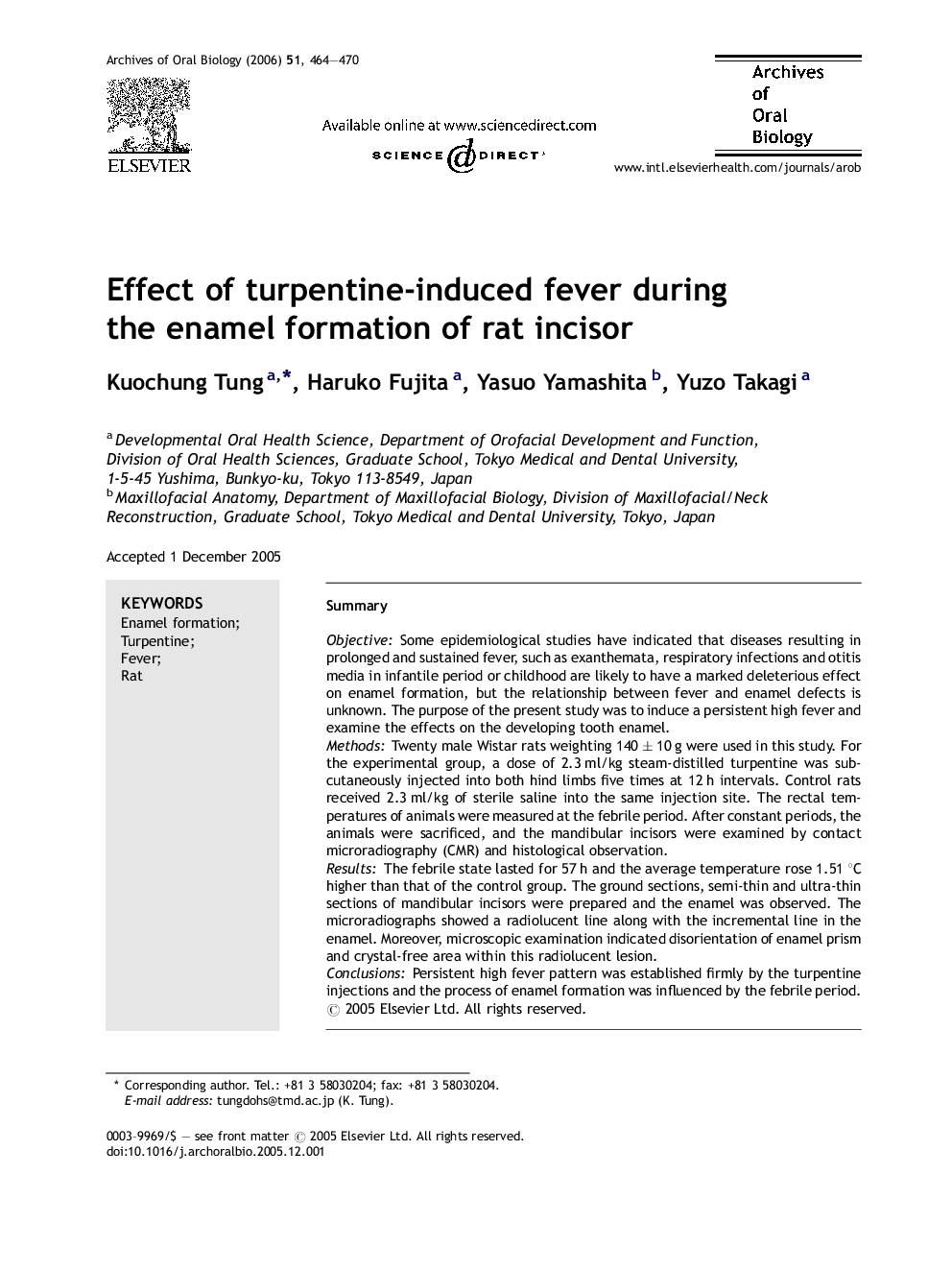| Article ID | Journal | Published Year | Pages | File Type |
|---|---|---|---|---|
| 3122012 | Archives of Oral Biology | 2006 | 7 Pages |
SummaryObjectiveSome epidemiological studies have indicated that diseases resulting in prolonged and sustained fever, such as exanthemata, respiratory infections and otitis media in infantile period or childhood are likely to have a marked deleterious effect on enamel formation, but the relationship between fever and enamel defects is unknown. The purpose of the present study was to induce a persistent high fever and examine the effects on the developing tooth enamel.MethodsTwenty male Wistar rats weighting 140 ± 10 g were used in this study. For the experimental group, a dose of 2.3 ml/kg steam-distilled turpentine was subcutaneously injected into both hind limbs five times at 12 h intervals. Control rats received 2.3 ml/kg of sterile saline into the same injection site. The rectal temperatures of animals were measured at the febrile period. After constant periods, the animals were sacrificed, and the mandibular incisors were examined by contact microradiography (CMR) and histological observation.ResultsThe febrile state lasted for 57 h and the average temperature rose 1.51 °C higher than that of the control group. The ground sections, semi-thin and ultra-thin sections of mandibular incisors were prepared and the enamel was observed. The microradiographs showed a radiolucent line along with the incremental line in the enamel. Moreover, microscopic examination indicated disorientation of enamel prism and crystal-free area within this radiolucent lesion.ConclusionsPersistent high fever pattern was established firmly by the turpentine injections and the process of enamel formation was influenced by the febrile period.
